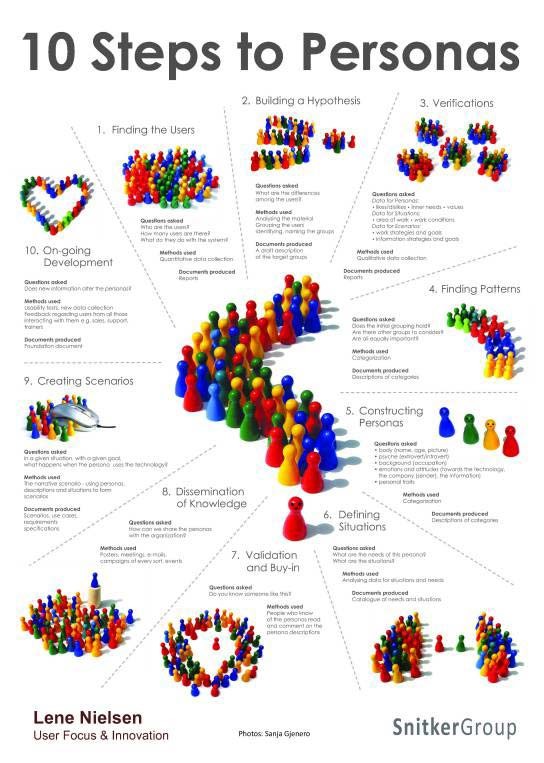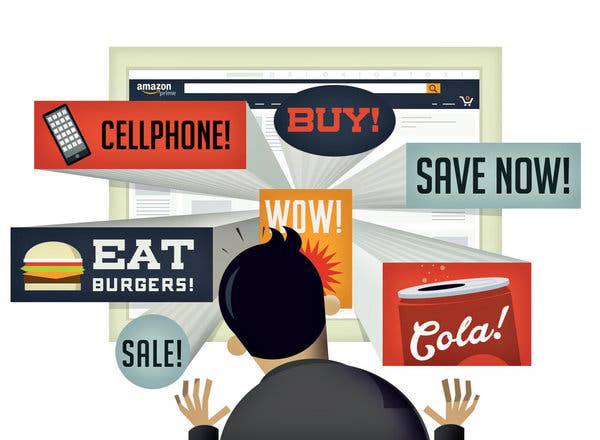You Should Know Me…

A persona, in user-centered design and marketing is a fictional character created to represent a user type that might use a site, brand, or product in a similar way (Wikipedia). Personas are fictional characters, which you create based upon your research in order to represent the different user types that might use your service, product, site, or brand in a similar way. Personas are also pivotal to crafting effective email marketing campaigns. Highly targeted emails get more opens, clicks, and engagement. Targeted emails are also more optimized for lead generation and likely to result in increased conversions. Creating personas will help you to understand your users’ needs, experiences, behaviors and goals. While personas do not describe real people, it is based on real data collected from multiple individuals. Personas add the human touch to what would largely remain cold facts in your research. When you create persona profiles of typical or atypical (extreme) users, it will help you to understand patterns in your research, which synthesises the types of people you seek to design for. Personas are also known as model characters or composite characters.

Personas provide meaningful archetypes which you can use to assess your design development against. Constructing personas will help you ask the right questions and answer those questions in line with the users you are designing for. For example, “How would Peter, Joe, and Jessica experience, react, and behave in relation to feature X or change Y within the given context?” and “What do Peter, Joe, and Jessica think, feel, do and say?” and “What are their underlying needs we are trying to fulfill?” You may ask “Why spend my time researching a Customer Persona?” The answer is: It ensures you aren’t making any uneducated guesses about the best ways to connect and engage with your potential customers – one of today’s biggest challenges is how to create engaging content. By developing your Customer Persona, you can save both time and money by targeting and focusing your marketing efforts. For example, if your persona spends the majority of their time on Instagram, developing a paid social media campaign will be a lot more effective than creating newspaper adverts. By understanding what your customer is looking for, what motivates them, and how they make their decisions, the marketing communications that you create will make your future client feel as though “Wow, this blog/ad/post was written just for me!”.

Remember, a Customer Persona:
- Is fictitious – created by you!
- Represents the key traits of a large segment of your audience
- Is developed using your knowledge of real customers
How do you create a Persona?
Conducting research into your persona(s) can be achieved in a number of ways:
- Surveys: Use online survey software like Survey Monkey or ask questions through your social media channels.
- Interviews: When interacting with current customers, ask open ended questions. Whilst we all love a glowing report about our products and services, it’s also important that you learn how you can improve.
- Feedback: Speak with the staff who interact with your customers on a daily basis, either through answering the phone or in person. This will help you understand the challenges they face, allowing you to develop a realistic persona.

There are 10 steps to creating engaging personas. The 10 steps are an ideal process but sometimes it is not possible to include all the steps in a project. Here I’ve outlined the 10-step process as described by Lene Nielsen in her Interaction Design Foundation encyclopedia article, Personas.
1. Collect Data: Collect as much knowledge about the users as possible. Perform high-quality user research of actual users in your target user group. In Design Thinking, the research phase is the first phase, also known as the Empathise phase.
2. Form a Hypothesis: Based upon your initial research, you will form a general idea of the various users within the focus area of the project, including the ways users differ from one another – For instance, you can use Affinity Diagrams and Empathy Maps.
3. Everyone Accepts the Hypothesis: The goal is to support or reject the first hypothesis about the differences between the users. You can do this by confronting project participants with the hypothesis and comparing it to existing knowledge.
4. Establish a Number: You will decide upon the final number of personas, which it makes sense to create. Most often, you would want to create more than one persona for each product or service, but you should always choose just one persona as your primary focus.
5. Describe the Personas: The purpose of working with personas is to be able to develop solutions, products and services based upon the needs and goals of your users. Be sure to describe personas in a such way so as to express enough understanding and empathy to understand the users.
- You should include details about the user’s education, lifestyle, interests, values, goals, needs, limitations, desires, attitudes, and patterns of behaviour.
- Add a few fictional personal details to make the persona a realistic character.
- Give each of your personas a name.
- Create 1–2-pages of descriptions for each persona.
6. Prepare Situations or Scenarios for Your Personas: This engaging persona method is directed at creating scenarios that describe solutions. For this purpose, you should describe a number of specific situations that could trigger use of the product or service you are designing. In other words, situations are the basis of a scenario. You can give each of your personas life by creating scenarios that feature them in the role of a user. Scenarios usually start by placing the persona in a specific context with a problem they want to or have to solve.
7. Obtain Acceptance from the Organisation: It is a common thread throughout all 10 steps that the goal of the method is to involve the project participants. As such, as many team members as possible should participate in the development of the personas, and it is important to obtain the acceptance and recognition of the participants of the various steps. In order to achieve this, you can choose between two strategies: You can ask the participants for their opinion, or you can let them participate actively in the process.
8. Disseminate Knowledge: In order for the participants to use the method, the persona descriptions should be disseminated to all. It is important to decide early on how you want to disseminate this knowledge to those who have not participated directly in the process, to future new employees, and to possible external partners. The dissemination of knowledge also includes how the project participants will be given access to the underlying data.
9. Everyone Prepares Scenarios: Personas have no value in themselves, until the persona becomes part of a scenario – the story about how the persona uses a future product – it does not have real value.
10. Make Ongoing Adjustments: The last step is the future life of the persona descriptions. You should revise the descriptions on a regular basis. New information and new aspects may affect the descriptions. Sometimes you would need to rewrite the existing persona descriptions, add new personas, or eliminate outdated personas.

Once you have a clear profile for your ideal client–a good buyer persona–you’ll find it easier to scout, study and comprehend their problems and motivations. A better understanding of their pain points will let you frame email content that addresses their issues in an effective way. With clear buyer-persona, you can frame an email marketing strategy that builds trust and increases brand recall by focusing on writing a relatable and engaging email copy for your email campaigns, which help your targeted recipients derive value faster.
Resources:
Personas – A Simple Introduction https://www.interaction-design.org/literature/article/personas-why-and-how-you-should-use-them
Stukent. (2019). The New Way of Email Marketing – Stukent. [online] Available at: https://www.stukent.com/expert-sessions/the-new-way-of-email-marketing/










